Article Summary: Kitsunebi Bibi @TFT🦊🔥 (@0kitsunebi) / X
Eye-catching work by mah_pn (@mah_pn777) / X
article
Translator: Scilla (@scilla_tftft) / X
Title: Translation of video commentary by Balmyeong on Akali (+Caitlin, Catalina, and Cale) countermeasure placement (15.2b)
URL: Translation of video commentary by Balmyeong on placement of Akali (+Caitlin, Catalina, and Cale) countermeasures
summary
The “Akari” configuration, which rose to prominence with Patch 15.2b, is so powerful that just making 2 * is virtually a top 4 definite.
In addition, carries such as Caitlin (Jace) Katarina Cale are likewise an unneglected threat that directly attacks the rear guard.
In this article, Balmyeong explains the placement techniques that are effective for each of the champions.
Learn the “placement studies” that can make a big difference in your winning percentage just by knowing them, and stabilize your top 4 or higher.
Contents
1. placement of anti-acari measures: use of “empty squares” to protect carries!
case.1 (when opponent Akari is on the right)
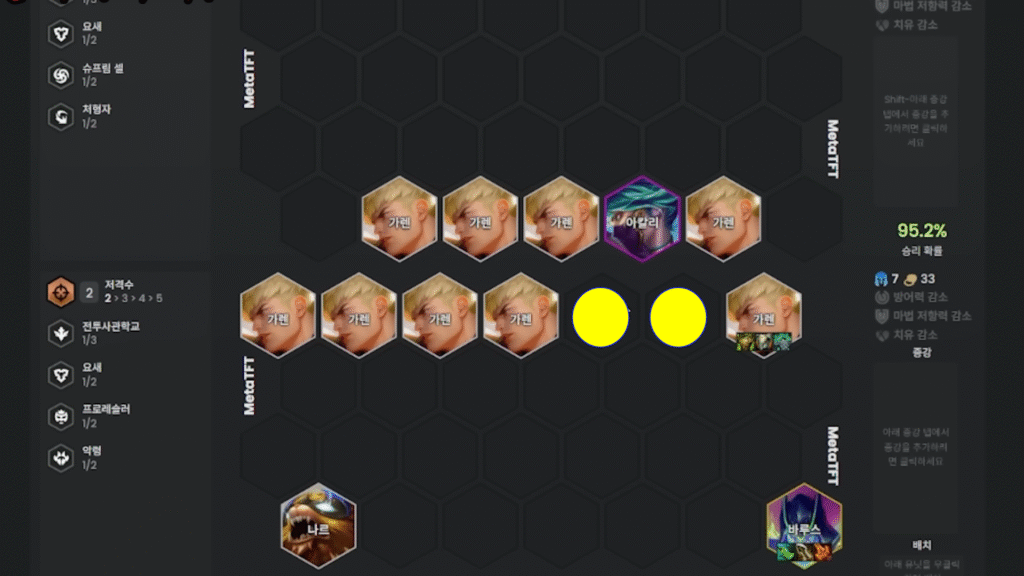
point
- Basic principle: 5th and 6th left of the front row are vacant, and tanks, decoys, and carriers are placed.
- Akali’s skill flies to the “furthest unit within range 4”. This prevents the carry from being targeted until the first to third shot.
case.2 (when the opponent Akali is on the left)
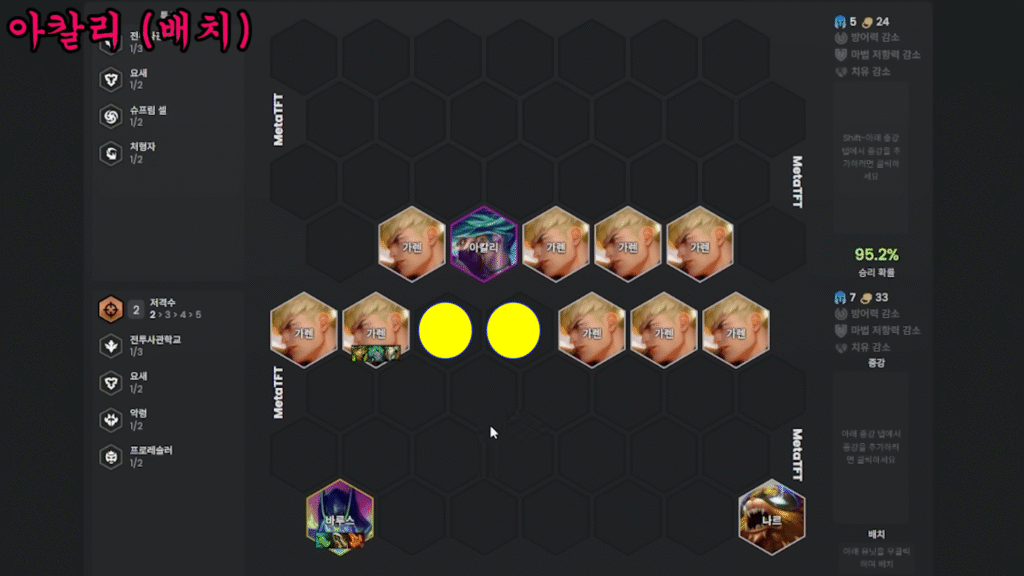
point
If the opponent places Akari on the left side, you can respond in the same way by vacating the third and fourth squares from the left in the front row.
Basically, it is easier and more stable to fix the placement based on the right side.
case.3 (application)
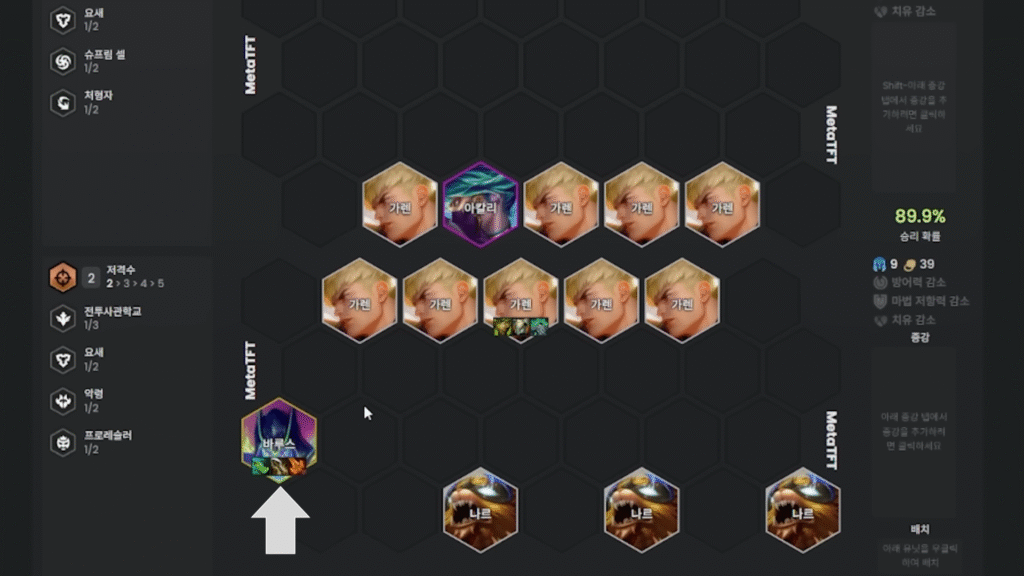
point
Simply moving the main carry to the left end of the third row will avoid 99% of Akari’s skills up to the third shot.
It is even more effective if there are other long-range decoy players.
It is a little less stable because it puts Carrie one square in front of the other, but depending on the situation, it can be a viable option.
2. caitlin countermeasure placement: decoys absorb snipe!
- Caitlin & Jace are often placed on the right side → Consider measures based on the right side as well.
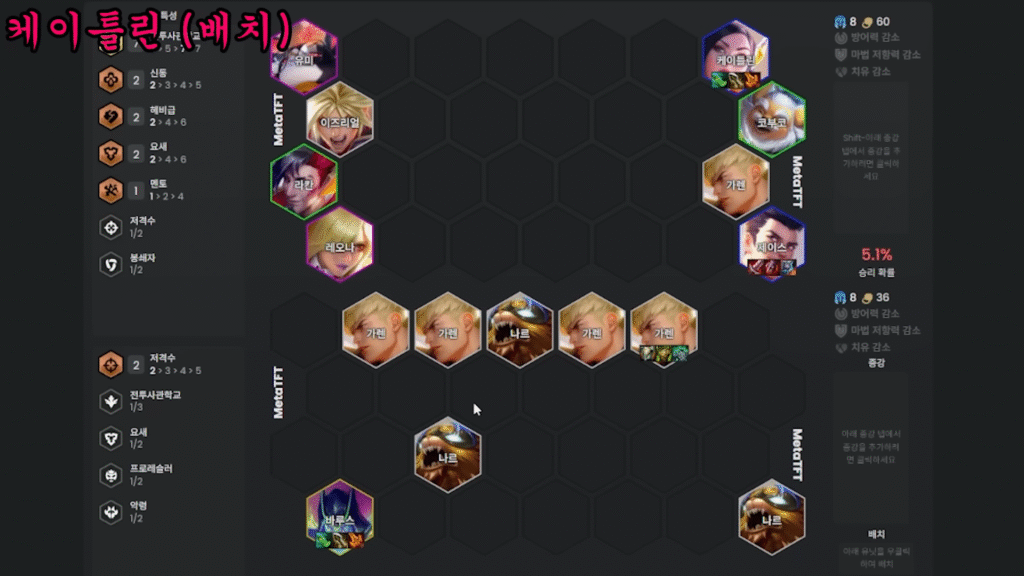
point
Decoy strategy
(1) Place the nerf (rear unit playing the decoy role) in the center of the front row.
(2) Place another decoy-playing unit in the third row, third left.
In this way, Caitlin’s first skill can be sucked by the front row ner (rear decoy) and the second by the third row rear decoy, thus avoiding “at least two” skills.
3. placement of Catalina countermeasures: leave the edges open and receive in the center!
point
- Catalina targets “the enemy with the lowest HP within 2 squares”.
- NG placement
- Tanks at the left and right ends of the front row → Lacan jumps in “unstoppable” and the rear carry is targeted.
- Scatter the rear guard → Catalina reaches the carry through
- Tanks at the left and right ends of the front row → Lacan jumps in “unstoppable” and the rear carry is targeted.
- Correct Arrangement
- Leave the edges of the front row empty and place the tank in the center.
- The rear guard is placed in a solid position to delay Catalina’s arrival.
- Leave the edges of the front row empty and place the tank in the center.
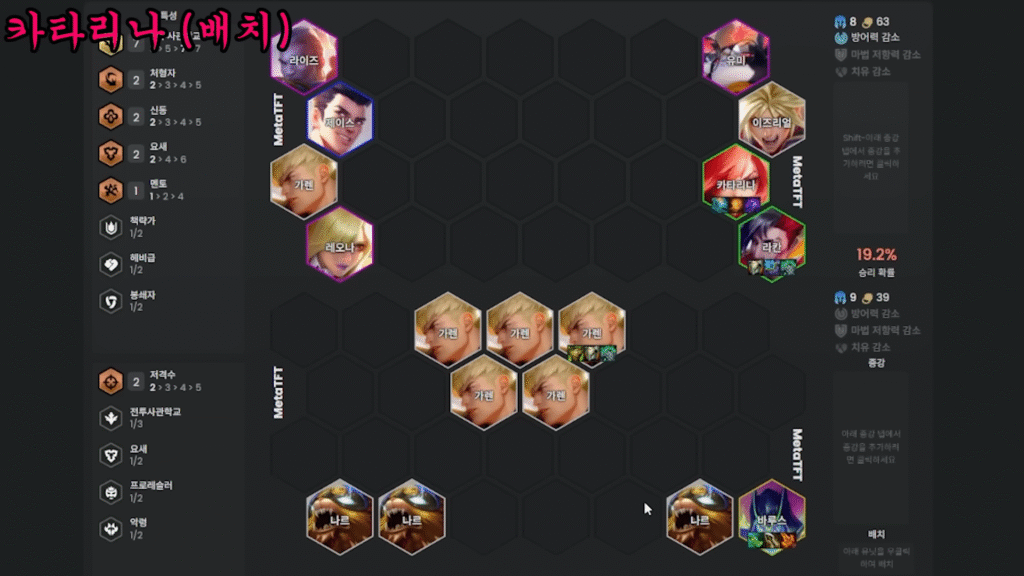
(This is the best solution placement vs. Catalina: !!!!)
4. anti-cail placement: end tanks neutralize ranged attacks!
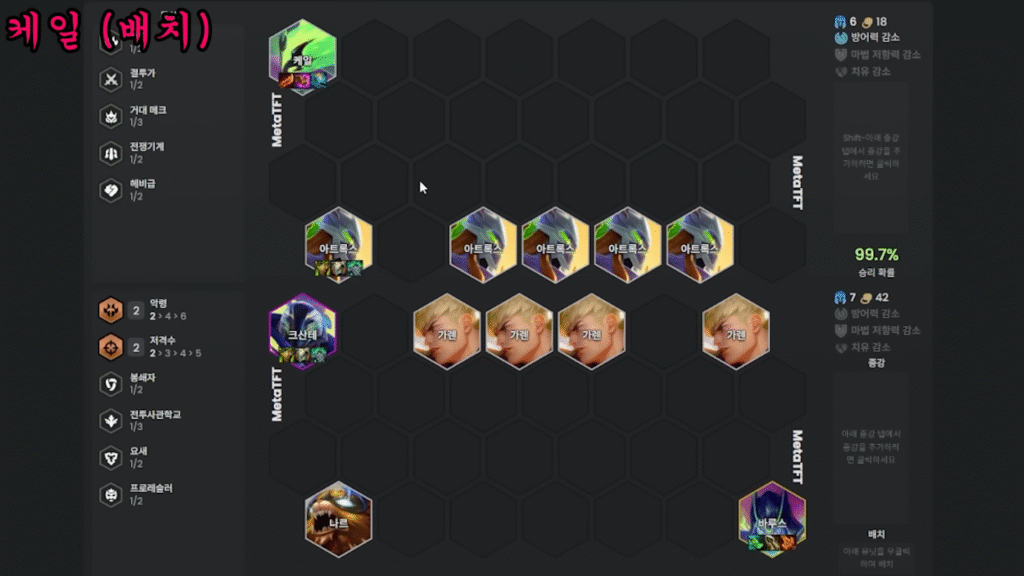
point
- Cale is a ranged attack → effective in dispersing tanks!
- basic layout
- Place an isolated tank (Ca Sante) at the end of the front row.
- Main tank on the side where Cale is located.
- This allows the ranged attack to be concentrated on one person, and Ka Sante can withstand it for more than 20 seconds, including resurrection.
- Conversely, when using a cairn, do not tank on the edge to break up the opponent’s countermeasure arrangement.
impression
What I felt after reading Balmyeong’s video translation of the article was that it was more than just an introduction to placement techniques, but that it conveyed well the importance of reading each other and breaking habits in TFT.
The article taught the importance of “placement techniques that become habitual and can be done unconsciously” to players who tend to think that “placement is a hassle because it is a post-reading game.
Since such small differences in placement can make the difference between victory and defeat, there were many situations in the book that made me want to try it out in actual games!

Learn Balmyeong’s placement studies and make a difference!


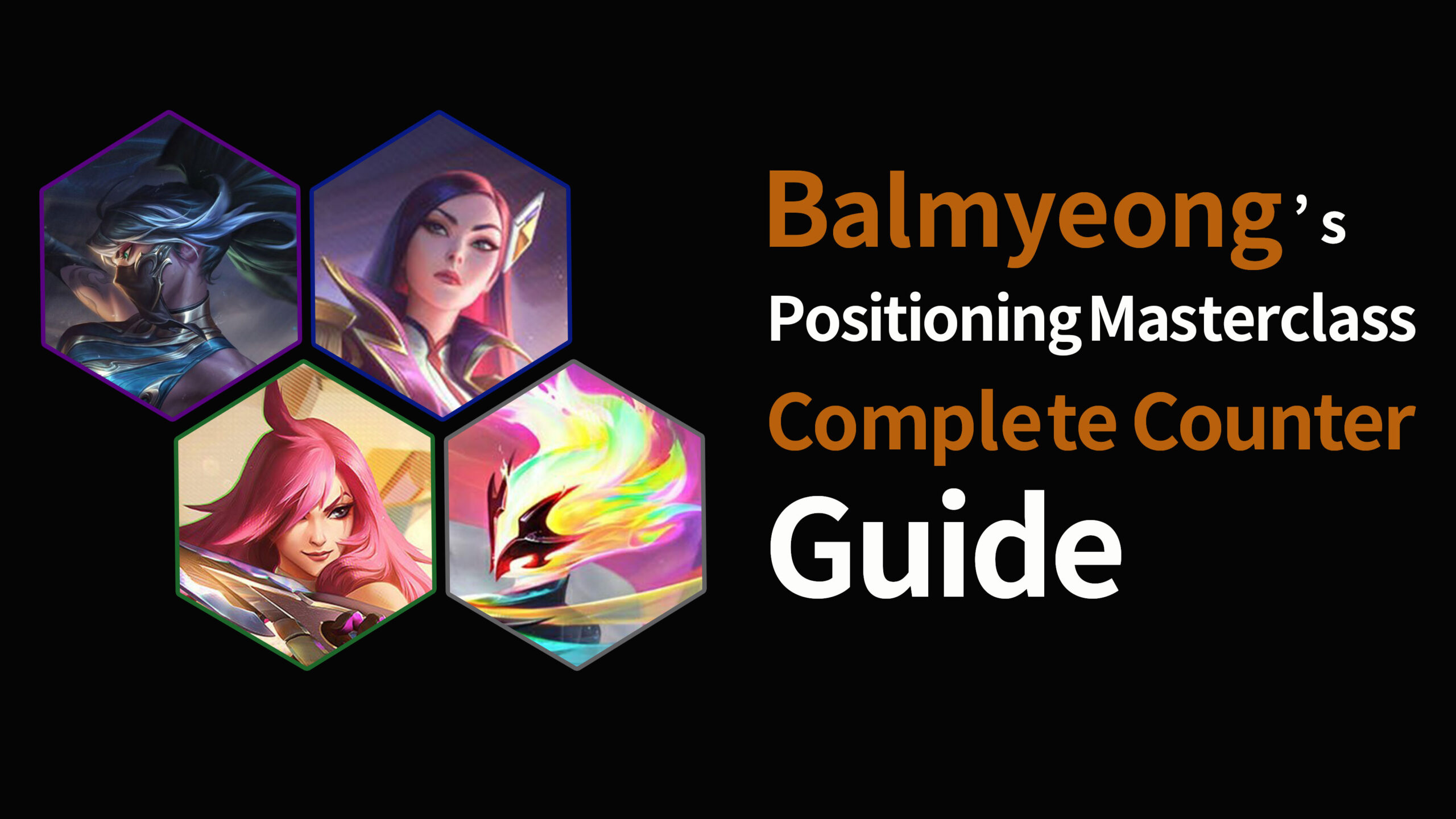


コメント